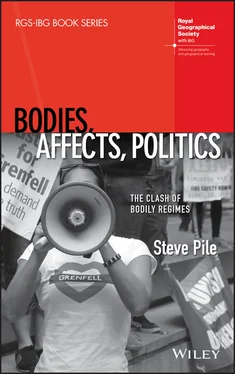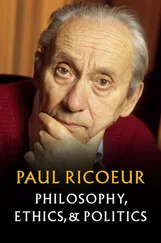The distribution of the sensible, for Rancière, is as political as it gets:
It is a delimitation of spaces and times, of the visible and the invisible, of speech and noise, that simultaneously determines the place and the stakes of politics as a form of experience. Politics revolves around what is seen and what can be said about it, around who has the ability to see and the talent to speak, around properties of spaces and possibilities of time. (2004, p. 8)
Let us not romanticise the Grenfell Tower tragedy, nor mark it as some upheaval in the constitution of the political. Yet, the fire, however temporarily, not only illuminated the boundary between who could speak and who could be heard, who was visible and who was invisible, what community looked and sounded like, it also meant that this could be contested…and contested anew. Indeed, a flurry of documentaries on Grenfell made visible and gave voice to the community, the histories of injustice and inequality, and also gave voice to the survivors and relatives (see Sborgi 2019). As Eddie Daffarn, who lived on the sixteenth floor of the Tower, in the 2018 documentary Grenfell (by Minnow Films, shown on BBC1 on 11 June 2018), put it:
I was very proud to live there, and it’s just a tragedy that we’re, you know, not able to show people, you know, what we were actually like […] Justice. Reparation. These words are really meaningless without fundamental change. Grenfell can represent a turning point in history. A change in how society views communities that live in social housing. That, they are listened to and respected, because had we been listened to and respected at Grenfell, it would not have happened. It’s as simple as that.
These kinds of justice, rooted in life itself, are justice from outside a political regime that defines justice from above, that constricts justice in and through the legal system and public inquiries that focus on socio‐technical systems. But they are also coexistent with it.
In this light, disturbances in the distribution of the sensible may not be the consequence of those outside the regime suddenly becoming visible to those inside the regime, but a clash between multiple, already‐existing distributions of the sensible and regimes of the body (see also Rancière 2004, pp. 46–47). This is the analysis that I will pursue in this book. This book explores both the coexistence of bodily regimes, and also the relationship between them. Of course, coexisting bodily regimes (around class, race, gender, sexuality and so on) can be mutually supportive, integrated and coherent. Ideas such as intersectionality have been developed to account for this. However, I am more interested in the ways that bodily regimes fail to ‘add up’ to a single coherent integrated system of privilege and power. Indeed, I am most interested in those moments and places where bodily regimes clash. This is what I see in the Grenfell Tower tragedy. It exposed the distribution of different voices and bodies, yet it also offers new stories – stories that do not add up to a singular understanding of the event, nor that can be closed down around pre‐determined understandings of those bodies, of affects or of politics. Rather, the tragedy reveals the indeterminacy of bodies, affects and politics – and it is in this that its radical possibilities lie. Like Hillsborough, Grenfell simply refuses to settle down, to be quieted.
For Rancière, political subjects are produced by fissures in the distribution of the sensible. It is through these fissures that a political process can be unleashed that opposes or resists the sensible order. The sensible order is an organisation – in Rancière’s terms, a police order – of bodies into ‘a system of coordinates that define modes of being, doing making and communicating that establishes the borders between the visible and the invisible, the audible and the inaudible, the sayable and the unsayable’ (Rockhill 2004, p. 93, in Rancière 2004). The sensible order assembles and parcels up people, assigning them to a proper place within modes of perception, but also in modes of knowledge, agency and passivity. The sensible order produces self‐evident truths about the way things are: creating modalities of what is visible and what is audible, creating modalities of what can be thought, said, made and done. However, Rancière acknowledges that contradictions can be generated between orders of the sensible, for example, between the visible and the sayable. He terms this silent speech: a hidden layer of meaning, awaiting expression, beneath the orders of speech and visibility.
Rancière’s central insight – about the organisation of bodies and the senses into regimes of the visible, the sayable and the actionable – must be altered in the light of Grenfell. As well as seeing hidden layers of meaning, we must rather register those moments when regimes of the body and the sensible clash or rub up against one another. These frictions and clashes occur between regimes that are organised at many different points in the experience of power relations, of affects and of bodies. They are not somehow outside or beyond systems of organisation of bodies, affects and power relations. Rather, these systems are open, porous, incomplete and mutable in ways that consistently fail to close down experience around a singular distribution of the sensible. Here, I follow work by Mustafa Dikeç (2005, 2015) and Divya Tolia‐Kelly (2019). For both Dikeç and Tolia‐Kelly, Rancière affords the opportunity to include excluded people in an understanding of, respectively, urban politics and the politics of the museum. Significantly, in Dikeç’s and Tolia‐Kelly’s work, those excluded people are further marginalised on grounds of race through the production of space. Thus, for Tolia‐Kelly, the exclusion of racialised artists is achieved through a particular colonial distribution of the senses (see also Tolia‐Kelly 2016). Dikeç, meanwhile, shows how the built environment is used to marginalise racialised groups, especially immigrants, to an (im)proper place: for example, by housing them on the peripheries of cities or making access to the city’s social and physical infrastructure difficult or even impossible. Bluntly, racialised subjects are pushed to the edges of cities and museum spaces – and thereby rendered voiceless, unseen and unintelligible.
Critically, this form of exclusion does not solely operate by policing space such that people are simply placed beyond the city or the museum, rather there is a topological ordering space. This topological ordering of space ensures that people can be socially excluded even while they are spatially proximate (on this, see Allen 2003; and especially 2016). Thus, even while racialised subjects are inside the city and the museum, they are kept socially distant, either by the racial segregation of urban space or through the production of white museum spaces (see also Bressey 2009, 2014). For me, taken together, what Dikeç and Tolia‐Kelly reveal is that two orders of the sensible can coexist, even as they are held apart. Indeed, it is their coexistence that ensures that the distribution of the sensible has to be policed, sometimes brutally (see Dikeç 2018) and, arguably, sometimes with housing policy and/or with malicious neglect, as the Grenfell and Hillsborough tragedies show.
More than this, regimes of the sensible are not just organised vertically, from above, but also horizontally, between and amongst people. Significantly, what this brings into view is that the clash of regimes is not just conducted at the border of the different means of organising and policing of who can and cannot speak, be seen or not, can action or not, but is also brought about by the existing together of different ontologies, epistemologies and experiences of speech, vision, action and so on. To show that this becomes operative through bodies, affects and politics is the work of this book.
Читать дальше












